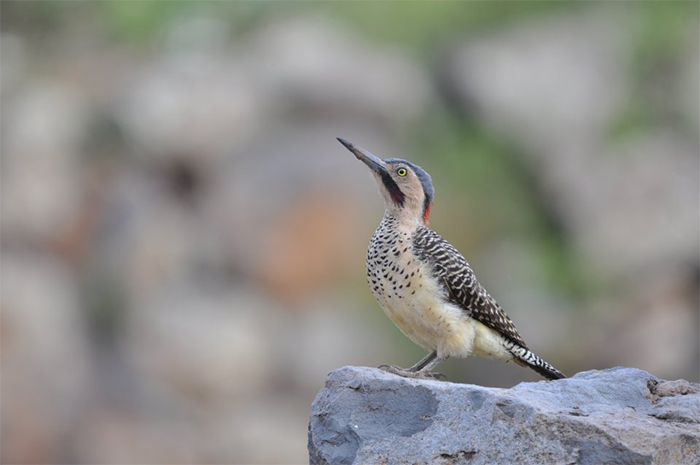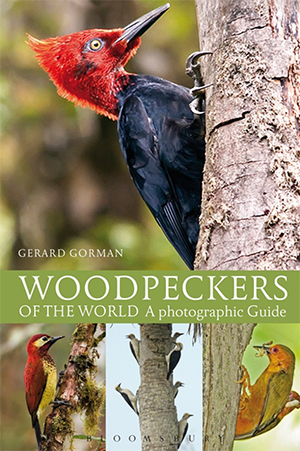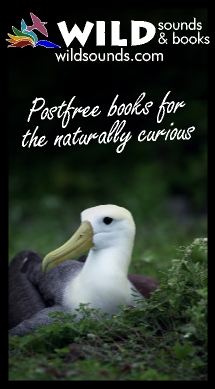Woodpeckers of the World
Gerard Gorman
Woodpeckers are perennial favourites - quirky, charismatic, highly attractive and sometimes teasingly elusive. They are also amongst the most widespread bird families on the planet - a foreign holiday almost anywhere brings with it the potential for new woodpeckers.
Now there is a book which reflects their true splendour and their full diversity - a handbook to all the woodpeckers of the world, written by Gerard Gorman, already very well known for his close interest in and extensive knowledge of this extraordinary family. This new volume covers all three subfamilies - the wrynecks, the piculets and the true woodpeckers - and provides a portrait of 239 species. Inevitably the taxonomy will be controversial for many woodpeckers have large ranges and exhibit extensive geographical variation. Indeed the author himself notes that his treatments “will please some and displease others”. For example, White-winged, American Three-toed and Iberian Green Woodpeckers are all ‘split’ whilst large complexes such as the Great Spotted, Grey-headed and White-backed Woodpeckers are ‘lumped’, though in the case of the latter group the potential for further taxonomic rearrangement is clearly highlighted by the author.
A series of very short introductory sections addresses a list of generic woodpecker topics including taxonomy, distribution, anatomy and morphology, habitat, behaviour, breeding, plumage and moult, food and foraging, flight, calls, drumming and the ecological importance of woodpeckers. Then come the 239 species accounts, each of which covers identification, vocalisations, drumming, status, habitat, range, taxonomy and variation, similar species and food and foraging. The texts are concise and are accompanied by range maps which are, pleasingly, of a good size. Maps are often reproduced far too small in such guides but here there is no problem in reading and interpreting them.

Published: 19 Jun 2014
Christopher Helm/Bloomsbury
Pages: 528
ISBN: 978-1408147153
Hardcover
RRP: £34.99
SPECIAL OFFER Pay just £27.99 when you quote discount code RBA43 - stock due from 26 May
Very important please read before ordering: When ordering via WildSounds, the value of the voucher will be deducted from your order when the order is processed. The total displayed on your shopping basket excludes the value of the promo but this will be applied before final payment is taken.
Inevitably, the reader’s attention turns to the most threatened woodpeckers and to two species in particular - Ivory-billed and Imperial Woodpeckers. The sad demise of both is clearly set out but to say that the reports of the former in Arkansas in 2004 and 2005 prompted “inconclusive” searches is being somewhat generous.
Though the text is sound and informative, the chief joy of this volume is the photographs. These are given plenty of space and are a visual treat. This is by far the best and most comprehensive set of woodpecker images ever assembled and their overall standard is exceptional. It is hard to imagine how the supremely crisp portraits of, for example, Lewis’s, Yellow-browed and Lesser Spotted Woodpeckers could be bettered. Even for the lesser known species such as Chocó Woodpecker, the picture quality is very high. There are no blurry, dark, small image ‘record shots’ here. This is a huge testament to the the skills of the many photographers whose work has been used but is also a reflection of the time and effort which has clearly gone into sourcing the images. Further enhancing the book’s visual appearance are the clean, bright, attractive layouts.
Finally, the book is fully referenced, indeed so extensive is the bibliography that only post-2002 sources are cited. ‘Woodpeckers of the World’ is therefore a huge achievement, comprehensive, authoritative and visually stunning. It is highly recommended.
Andy Stoddart
May 2014
Commission for Conservation
Rare Bird Alert does not profit from the sale of books through Wildsounds. Instead we are part of their Commission for Conservation programme where a percentage of every sale made through RBA helps supports BirdLife's Spoon-billed Sandpiper Fund.









